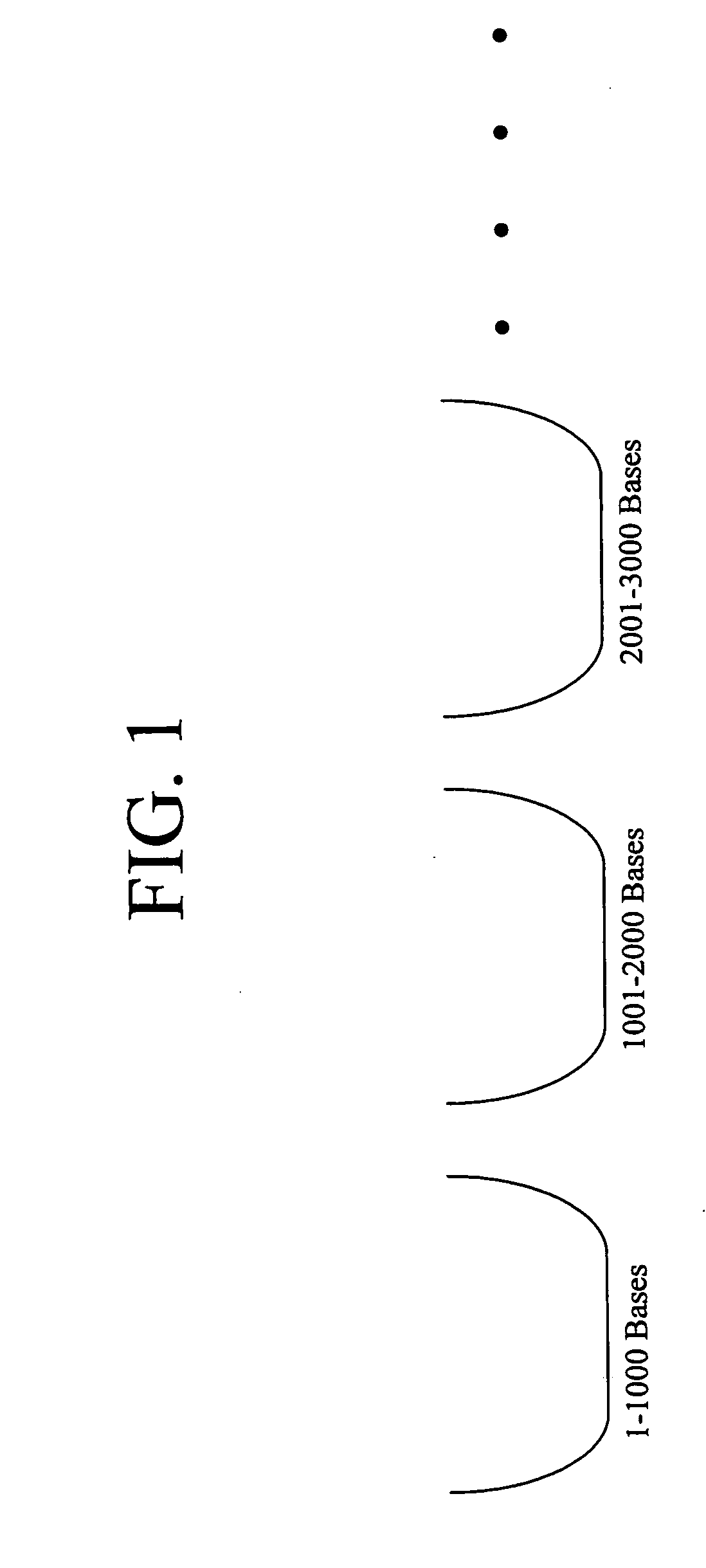Recursive categorical sequence assembly
a sequence and assembly technology, applied in the field of high-speed and highthroughput computing, can solve the problems of high probability of poor data quality, spurious matches, and mismatches allowed when overlapping these reads, and achieve the effect of improving phrap and other assembly methods
- Summary
- Abstract
- Description
- Claims
- Application Information
AI Technical Summary
Benefits of technology
Problems solved by technology
Method used
Image
Examples
Embodiment Construction
[0030] The present invention can be embodied as a software application resident with, in, or on any of the following: a database, a Web-server, a separate programmable device that communicates with a Web-sever through a communication means, a software device, a tangible computer-usable medium, or otherwise. Embodiments comprising software applications resident on a programmable device are preferred. Alternatively, the present invention can be embodied as hardware with specific circuits, although these circuits are not now preferred because of their cost, lack of flexibility, and expense of modification.
[0031] The present invention may be a computer program used in conjunction with Phrap or any other sequence assembly method. The computer program may be written in Perl, C, or any other language. A computer program may be joined with Phrap or any other sequence assembly program or run on top of it. A computer program may also be written to replace Phrap and determine sequence assembl...
PUM
| Property | Measurement | Unit |
|---|---|---|
| size | aaaaa | aaaaa |
| entropy | aaaaa | aaaaa |
| compression ratio | aaaaa | aaaaa |
Abstract
Description
Claims
Application Information
 Login to View More
Login to View More - R&D
- Intellectual Property
- Life Sciences
- Materials
- Tech Scout
- Unparalleled Data Quality
- Higher Quality Content
- 60% Fewer Hallucinations
Browse by: Latest US Patents, China's latest patents, Technical Efficacy Thesaurus, Application Domain, Technology Topic, Popular Technical Reports.
© 2025 PatSnap. All rights reserved.Legal|Privacy policy|Modern Slavery Act Transparency Statement|Sitemap|About US| Contact US: help@patsnap.com



